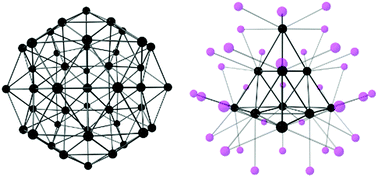Growth patterns and structural motifs of cadmium clusters with up to 60 atoms: disordered or not?†
Abstract
Using two different approaches, the structures of Cdn clusters are optimized. At first, parameterized density-functional calculations using the DFTB method in combination with evolutionary algorithms provide one set of candidate structures. Second, earlier proposed structures based on the Gupta potential provide a second set. Subsequently, all structures of each set are re-optimized using parameter-free density-functional calculations. It turned out that those based on the DFTB calculations in almost all cases were those of the lowest total energy. By analysing the structural properties as a function of cluster size information on growth patterns can be extracted. Thereby, the results show a certain preference that the atoms of the inner parts have surroundings as found in bulk hcp Cd. Furthermore, for larger size ranges, we could identify a specific growth pattern, implying that most of these clusters cannot be classified as being disordered. The results show also that the 4d electrons have only a weak influence on the properties of the clusters that, however, is so strong that a jellium-like model occasionally becomes inaccurate in describing the properties. In particular, the question at which size the clusters can be considered to be metallic becomes non-trivial to answer. Further arguments based on a comparison of the HOMO–LUMO gaps with the Kubo gap, however, suggested the non-metallic properties in the studied size range.


 Please wait while we load your content...
Please wait while we load your content...